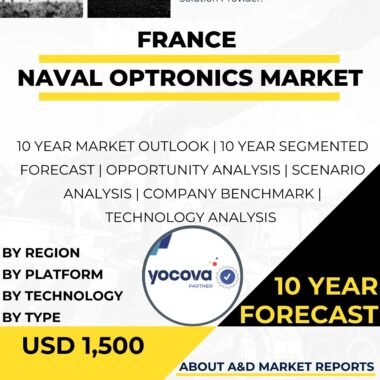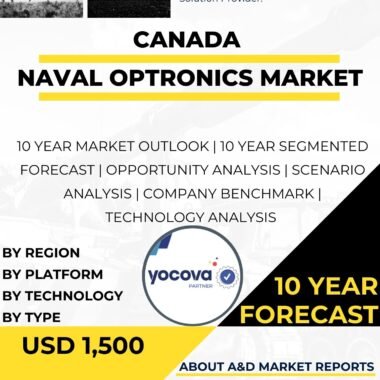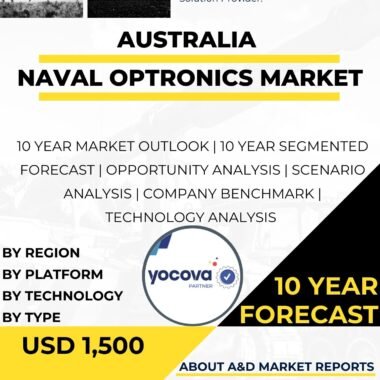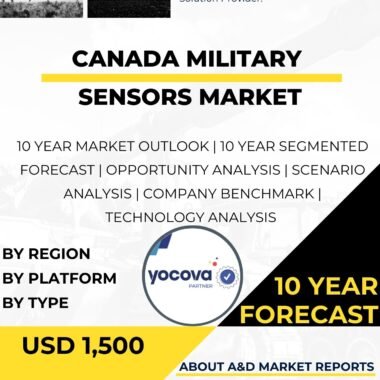Description
The Naval Optronics market in Brazil is an integral part of the country?s broader naval and defense industry, which plays a strategic role due to Brazil?s extensive coastline and growing maritime activities. Naval optronics refers to the combination of optical and electronic sensor technologies utilized in naval systems to enhance situational awareness, surveillance, target acquisition, and threat detection. In Brazil, this market encompasses advanced electro-optical sensors, infrared cameras, laser rangefinders, night vision devices, and other imaging systems installed on various naval platforms, including surface vessels, submarines, and unmanned maritime vehicles.
Brazil?s naval optronics demand is closely linked to its naval modernization efforts and the strategic importance of maritime security. The country?s navy requires sophisticated sensor suites for multi-role ships engaged in patrolling territorial waters, protecting offshore oil and gas assets, counter-piracy missions, and search-and-rescue operations. The geopolitical importance of securing Brazil?s coastal and offshore resources amplifies the need for reliable and capable optronic systems that provide accurate visual and infrared intelligence in different weather and light conditions. Consequently, naval optronics systems contribute directly to improving the operational effectiveness of the Brazilian Navy?s fleet, helping to maintain maritime domain awareness and strengthening defense capabilities.
The growth of Brazil?s naval optronics market is also influenced by its domestic shipbuilding and defense industrial base, which includes national companies producing or assembling components and integrating optronic technologies into naval platforms. The government?s local content policies encourage using Brazilian industry for key naval equipment, fostering investment and innovation in naval sensor technologies. The expansion of offshore oil exploration, especially in the pre-salt oil fields, has driven demand not only for specialized vessels but also for enhanced surveillance and reconnaissance capabilities to ensure the protection of maritime infrastructure. This has provided an impetus for the naval optronics sector to develop improved maritime observation and targeting systems.
Technological advancements have been shaping the naval optronics landscape in Brazil. Modern systems increasingly feature high-resolution imaging, multispectral sensors capable of detecting targets across different wavelengths, and the integration of artificial intelligence for automated threat recognition and decision support. Brazilian naval platforms are incorporating these technologies to meet the challenges of operating in complex littoral environments, where visibility can be reduced due to weather, sea conditions, or adversary countermeasures. The inclusion of unmanned maritime vehicles equipped with advanced optronic payloads reflects a global trend toward autonomous maritime operations, which Brazil is also exploring.
In parallel with the operational and industrial factors, Brazil?s naval optronics market faces challenges such as the need for ongoing technological upgrading, competition with established global suppliers, and the bureaucratic hurdles that can slow procurement processes. Despite these challenges, there is a positive outlook given the country?s commitment to naval modernization programs and increasing defense expenditures targeted at securing maritime interests. Collaboration between international defense firms and Brazilian companies enhances technology transfer and the localization of advanced optronic components.
Brazil?s geographic and economic position further enhances the naval optronics market?s potential. The country?s extensive coastline and strategic maritime routes contribute to significant commercial shipping and energy activities, necessitating robust maritime surveillance and defense solutions. The naval optronics systems in use or planned for implementation support a variety of functions beyond military defense, including environmental monitoring and search and rescue, highlighting the dual-use nature of these technologies.
Overall, the naval optronics market in Brazil represents a dynamic segment of the defense sector driven by strategic maritime needs, technological progress, and domestic industrial policies. Its evolution is marked by an increasing demand for sophisticated sensor systems that enable comprehensive maritime situational awareness and operational superiority. Through combined efforts in technology development, industrial growth, and strategic investments, Brazil continues to enhance its naval capabilities with cutting-edge optronic solutions vital for national security and economic interests in the maritime domain. This market is expected to grow in sophistication and scale as Brazil further modernizes its naval forces and expands its maritime operational footprint.
This summary reflects the interplay of Brazil?s geographic significance, defense priorities, technology trends, and industrial capabilities shaping the naval optronics sector. The integration of advanced optronic technologies enables the country?s navy to perform increasingly complex maritime security missions effectively while contributing to the broader naval and defense ecosystem within Brazil. The evolving nature of naval warfare and maritime security challenges globally ensures that this market segment remains a critical focus for continued investment and development in the Brazilian defense industry




